Related Research Articles
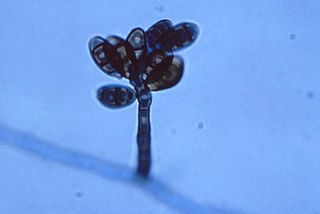
Curvularia is a hyphomycete (mold) fungus which is a facultative pathogen, or beneficial partner of many plant species and common in soil. Most Curvularia are found in tropical regions, though a few are found in temperate zones.

Nail-tail wallaby refers to Onychogalea, a genus describing three species of macropods, all of which are found in Australia. Related to kangaroos and wallabies, they are smaller sized species distinguished by a horny spur at the end of their tail. The northern nail-tail wallaby is still common in the northern part of Australia, the crescent nail-tail is now extinct, and the bridled nail-tail is considered rare and endangered, with probably fewer than 1100 mature individuals in the wild. Nail-tail wallabies are smaller than many other wallabies.

Philenora is a genus of moths in the subfamily Arctiinae. The genus was erected by Rudolph Rosenstock in 1885.

Philenora elegans is a moth of the subfamily Arctiinae first described by Arthur Gardiner Butler in 1877. It is found in Australia.

Jamides aratus is a butterfly of the lycaenids or blues family. It is found on Peninsular Malaysia, most of Indonesia and some surrounding islands.

Cymatosyrinx is a genus of sea snails, marine gastropod mollusks in the family Drilliidae.
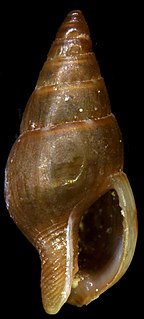
Astyris is a genus of sea snails, marine gastropod mollusks in the family Columbellidae, the dove snails.
Heteractaea is a genus of crabs in the family Xanthidae, containing the following species:

Lymantria lunata, the luna gypsy moth, is a moth of the family Erebidae. The species was first described by Caspar Stoll in 1782. It is found in Southeast Asia, from India to the northeast coast of Australia.
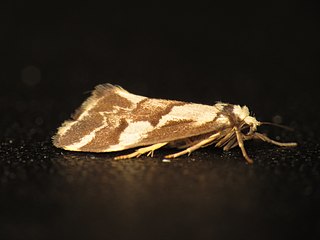
Philenora chionastis is a moth in the subfamily Arctiinae. It was described by Edward Meyrick in 1886. It is found in the Australian states of Queensland and New South Wales.
Philenora omophanes, the delicate philenora, is a moth in the subfamily Arctiinae. It was described by Edward Meyrick in 1886. It is found in the Australian states of New South Wales and Victoria.
Philenora pteridopola is a moth in the subfamily Arctiinae. It was described by Turner in 1922. It is found in Australia.
Philenora undulosa is a moth in the subfamily Arctiinae. It was described by Francis Walker in 1857. It is found in Australia.
Philenora irregularis is a moth in the subfamily Arctiinae. It was described by Thomas Pennington Lucas in 1890. It is found in Australia.
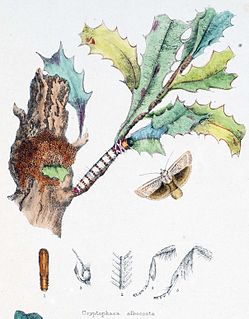
Cryptophasa is a genus of moths of the family Xyloryctidae.
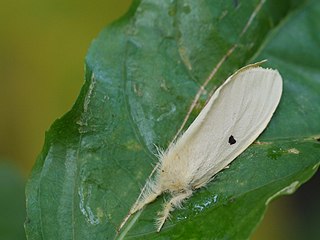
Euproctis lunata, the castor hairy caterpillar, is a moth of the family Erebidae. The species was first described by Francis Walker in 1855. It is found in India, Pakistan, Sri Lanka and Thailand.
Heterocampa lunata is a species of moth in the family Notodontidae. It was first described by Henry Edwards in 1884 and it is found in North America.
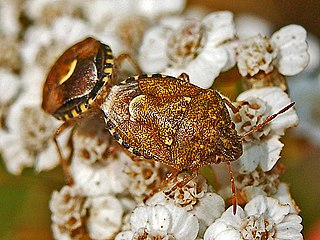
Staria lunata is a species of shield bug belonging to the family Pentatomidae. It is the only species of the genus
References
- ↑ Savela, Markku (7 December 2015). "Philenora lunata (Lucas, 1890)". Lepidoptera and Some Other Life Forms. Retrieved 24 October 2019.
| This Lithosiini-related article is a stub. You can help Wikipedia by expanding it. |
| This Australia-related article is a stub. You can help Wikipedia by expanding it. |